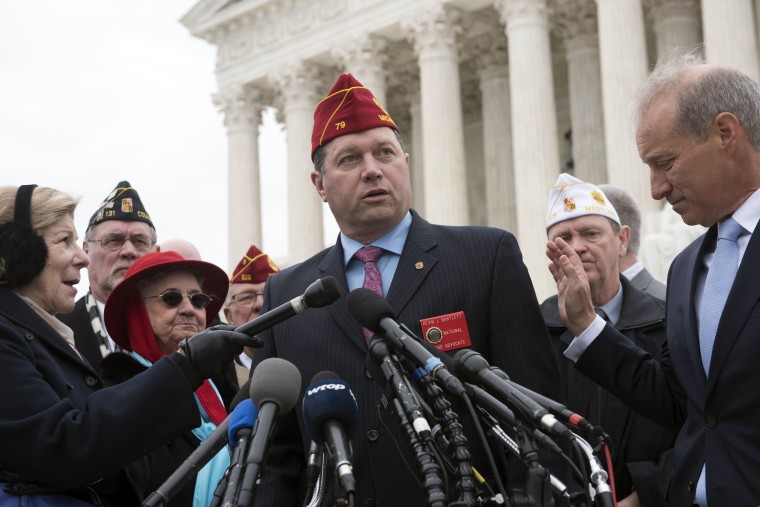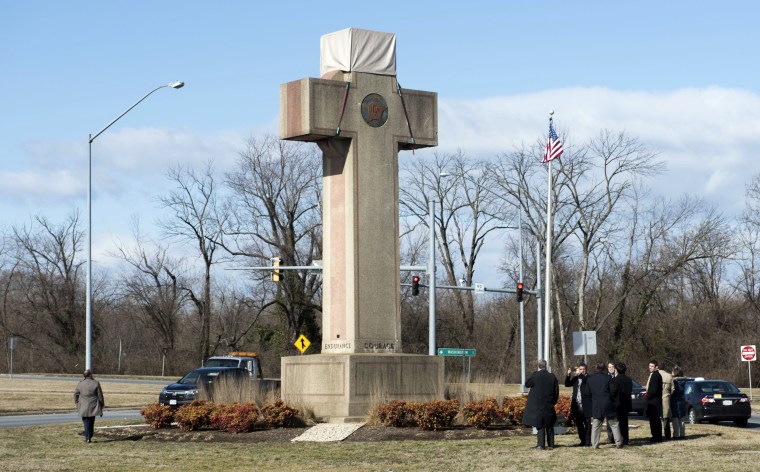On Wednesday, the Supreme Court heard oral arguments in a case that could determine when and whether religious symbols can be displayed on government property.
Picture it. Almost a century ago, a chapter of the American Legion, a veteran’s service organization, wanted to honor World War I veterans from Maryland who fought and died in battle. The American Legion monument is a 40-foot tall “Peace Cross,” which is technically known as a Latin cross. The monument stands on Maryland state grounds and is maintained by the state of Maryland.
The problem for Maryland is that the Establishment Clause, which is part of the First Amendment, provides that “Congress shall make no law respecting an establishment of religion…”. The Supreme Court has interpreted this to mean that neither Congress nor state or local governments should be able to promote one religion over any other religion or belief system (or promote a non-religious belief system or a religious one.)
We know the government cannot force you to attend or support your local church, temple, or mosque. But we also know that just a little promotion of religion might be okay.
So it might be constitutional for a government action to have an incidental or secondary effect of promoting one religion, religion in general, or non-religion, but the government can’t go too far. The question the Supreme Court has wrestled with for years is how far is too far. Too often, the answer has been: We’re not sure.
We know the government cannot establish an official national religion. We know the government cannot force you to attend or support your local church, temple, or mosque. But we also know that just a little promotion of religion might be okay. In another case dealing with the Establishment Clause, in 2005, the Supreme Court said it was constitutional for the Ten Commandments to be displayed on the Texas state capitol. A divided Supreme Court concluded that while the Ten Commandments are undeniably religious, they also have historical meaning and “[s]imply having religious content or promoting a message consistent with a religious doctrine does not run afoul of the Establishment Clause.”

A U.S. Court of Appeals recently described the Supreme Court’s Establishment Clause cases as a “hot mess.” That may be a charitable description. The Supreme Court has created a lack of guidance that allows inconsistent rulings to flourish.
The Supreme Court created the current test for evaluating Establishment Clause cases in 1971. In this Maryland case, the test would require that the monument has a secular purpose, that the principal or primary effect of the monument is neither to promote nor hinder religion and that the monument does not lead to excessive entanglements between the government and a religion. Given the lack of clarity provided by this test, it is easy to see why there is so much confusion as to what is and is not considered constitutional.
But the current case, the American Legion v. American Humanist, could change that.
American Humanist, a non-profit, sued the Maryland-National Capital Park and Planning Commission which maintains the memorial. The organization argues that a war memorial in the form of a cross violates the First Amendment’s Establishment Clause because it amounts to the government promoting Christianity. American Humanist lost its case in the trial court, where the judge concluded that the cross was used for the secular purpose of honoring those who died in World War I. But the U.S. Court of Appeals for the Fourth Circuit reversed that judgment and found that the primary effect of the Peace Cross was to endorse religion, here Christianity, and therefore it violated the Establishment Clause.
During oral arguments on Wednesday there appeared to be consensus for finding that the cross is a war memorial with historical significance, and is in fact constitutional. Justice Elena Kagan, for instance, described the cross as a “preeminent symbol” of sacrifice. Justice Breyer suggested that in part because of the historical significance attached to the memorial, it should be able to stand, but that the government should not be able to erect new crosses on government property.
Based on oral arguments today, it seems likely that the court will find this particular war memorial to be constitutional, but will struggle to articulate a standard for future cases.
Like so many Supreme Court cases, the decision in Maryland could have broader reaching implications. The Supreme Court’s ruling could dictate whether and what type of religious displays are permissible on public grounds, including public schools. For instance, it seems like every holiday season we debate the legality of various Christmas nativity scenes and Hanukah menorahs. The court’s ruling may also determine whether two different war memorials in Arlington National Cemetery — both crosses — are constitutional.
A decision is expected by the end of June.

